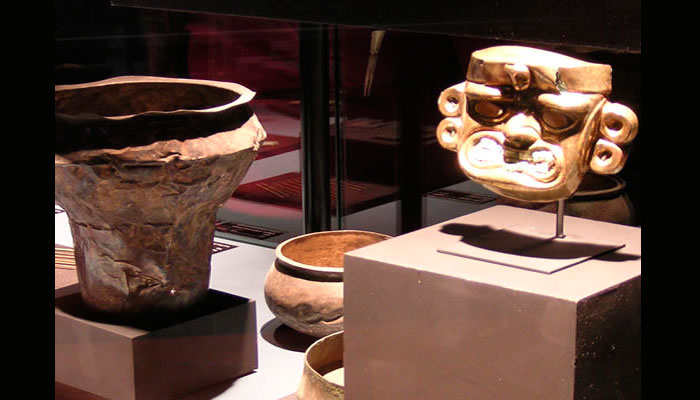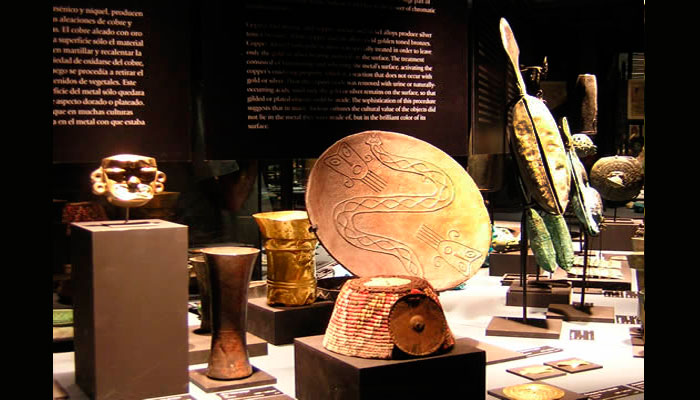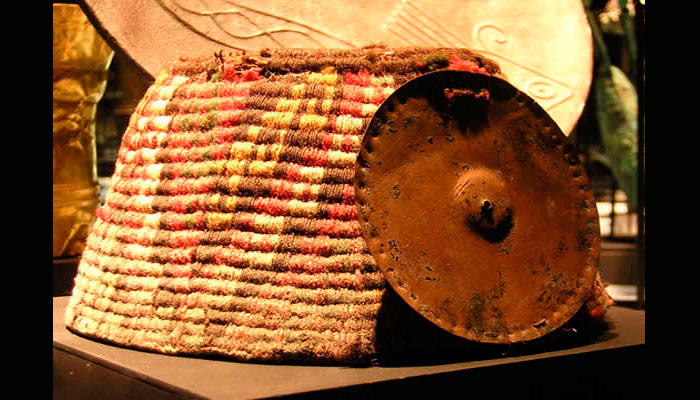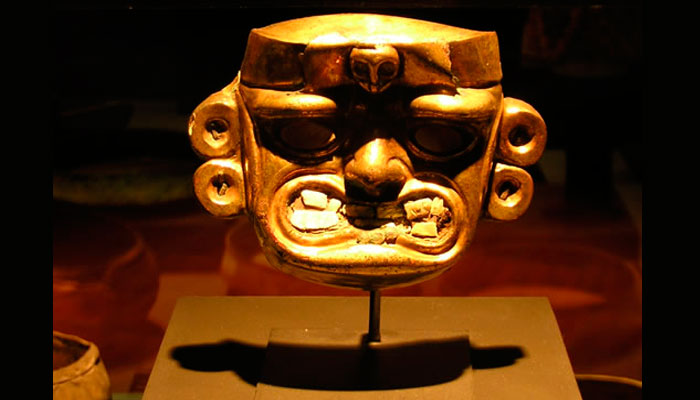The Art of Copper in the Andean World – 2004
- From stone to jewel
- Metal tools
- Chromatic palette of copper
- Metallic sounds and glitters
- Bronze bells
- Metals for taking away life
- Copper on the shaman’s altar
- Copper in the andean iconography
- Metallic bodies
- The face of death
- Food for men
- Food for the gods
- The power of the cailles
- Epilogue
- Galería de fotos
Chromatic palette of copper
One of the properties that made metals so attractive in the Andes was their varied and unique colors, that could rarely be obtained with other raw materials. Of all the metals, copper was the one that allowed the Andean artisans to obtain the greatest color variations. Smelted copper is a bright reddish color, which was highly valued. The replicas of metal objects made in other materials and painted green show that they meant to copy an oxidized copper object. Copper achieved its greatest versatility, however, when it was alloyed with small amounts of other metals. A large part of copper’s cultural value in the Andean world lies in this power of chromatic transformation.
Copper and arsenic, and copper, arsenic and nickel alloys produce silver toned bronzes. While copper and tin alloys yield golden toned bronzes. Copper alloyed with gold or silver was specially treated in order to leave only the gold or silver bearing material on the surface. The treatment consisted of hammering and reheating the metal’s surface, activating the copper’s oxidizing property, which is a reaction that does not occur with gold or silver. Then the copper oxide was removed with urine or naturally-occurring acids, until only the gold or silver remains on the surface, so that gilded or plated objects could be made. The sophistication of this procedure suggests that in many Andean cultures the cultural value of the objects did not lie in the metal they were made of, but in the brilliant color of its surface.







































